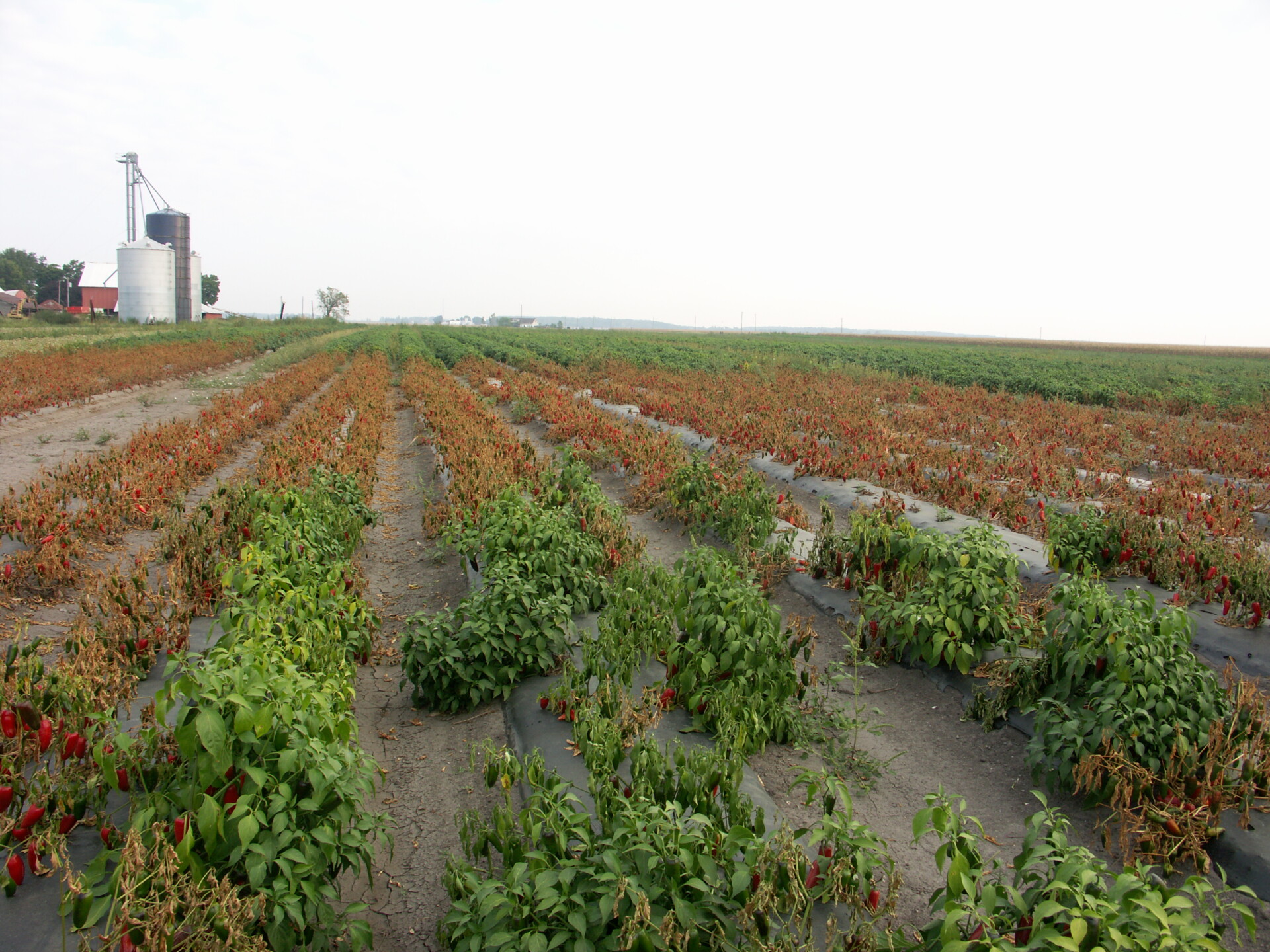pepper diseases
Phytophthora blight of pepper
 Figure 1. Pepper plants in the low area of this field have been killed outright by Phytophthora blight.
Figure 1. Pepper plants in the low area of this field have been killed outright by Phytophthora blight. 
 Figure 1. Pepper plants in the low area of this field have been killed outright by Phytophthora blight.
Figure 1. Pepper plants in the low area of this field have been killed outright by Phytophthora blight.